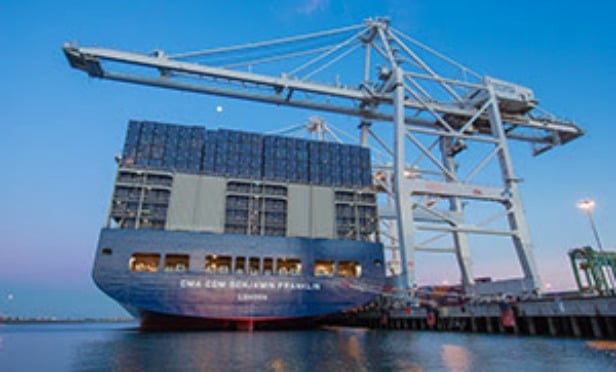 The Port of Long Beach is making major strides in reducing ship emissions and improving air quality. According to the 2017 emissions inventory, the port cut diesel particulates by 88%, sulfur oxides by 97% and nitrogen oxides by 56% since 2005. The reductions in ship emissions are even more impressive, considering cargo volumes increased steadily in the last few years, up 11% in 2017 alone and a total of 12% since 2005. As a result of the aggressive reduction in port emissions, the port is currently outpacing its 2023 clean air goals, outlined in the 2005 Green Port Policy.
The Port of Long Beach is making major strides in reducing ship emissions and improving air quality. According to the 2017 emissions inventory, the port cut diesel particulates by 88%, sulfur oxides by 97% and nitrogen oxides by 56% since 2005. The reductions in ship emissions are even more impressive, considering cargo volumes increased steadily in the last few years, up 11% in 2017 alone and a total of 12% since 2005. As a result of the aggressive reduction in port emissions, the port is currently outpacing its 2023 clean air goals, outlined in the 2005 Green Port Policy.
“The annual inventory is an important part of the 2005 Green Port Policy. We committed to reducing our environmental impact on our neighbors and to make sure the community could easily chart our progress in that effort. The inventory is one way that anyone can see the progress,” Lee Peterson of the Port of Long Beach, tells GlobeSt.com. “At-berth emissions from ships are virtually eliminated in more than half of all container ship calls at the Port with a practice called “shore power,” where ships plug into electricity while docked, and shut down diesel engines. As the practice has increased in recent years, it has gone a long way to reducing emissions, even as cargo volume rises.”
The Port of Long Beach's ultimate goal is to reduce diesel particulates to 77%, sulfur oxides to 93% and nitrogen oxides to 59%. The port is on the road to reaching its goals, but plans to continue to make green investments. “Our next steps are on the road to zero emissions for the cargo handling equipment by 2030 and the drayage fleet by 2035, and there will be incremental improvement along the way thanks to goals for near-zero emission equipment much sooner,” says Peterson.
Greenhouse gases were not targeted in the original clean air goals, however, they have trended downward. This year, greenhouse gases were reduced by 18% and greenhouse gases per TEU has trended downward. Reducing greenhouses gases has presented the biggest challenge for the port. “We'll continue to work on reducing greenhouse gases, which remain a challenge because those emissions remain steady even as the criteria pollutants are reduced, for example, with cleaner and newer diesel trucks,” explains Peterson. “As we move forward to our zero-emissions goal, we should be able to make progress on these issues as well. One way we are doing that is with our Technology Advancement Program, which provides funding to companies that are developing new clean air equipment.”
The Port of Long Beach has made significant capital improvements to achieve these clean air goals and reduce port emissions. Ultimately, these improvements have been beneficial to the port's growth. “The investment we made in environmental sustainability is what has allowed this Port to continue to modernize and grow,” says Peterson. “As we modernize, we strengthen our competitiveness with deeper channels and berths, upgraded terminals, improved roadways for trucks, vastly improved rail connections, and other new facilities. As we live up to our commitment to clean the air, we have been able to win support for our projects, which helps our bottom line.”
© Touchpoint Markets, All Rights Reserved. Request academic re-use from www.copyright.com. All other uses, submit a request to [email protected]. For more inforrmation visit Asset & Logo Licensing.






